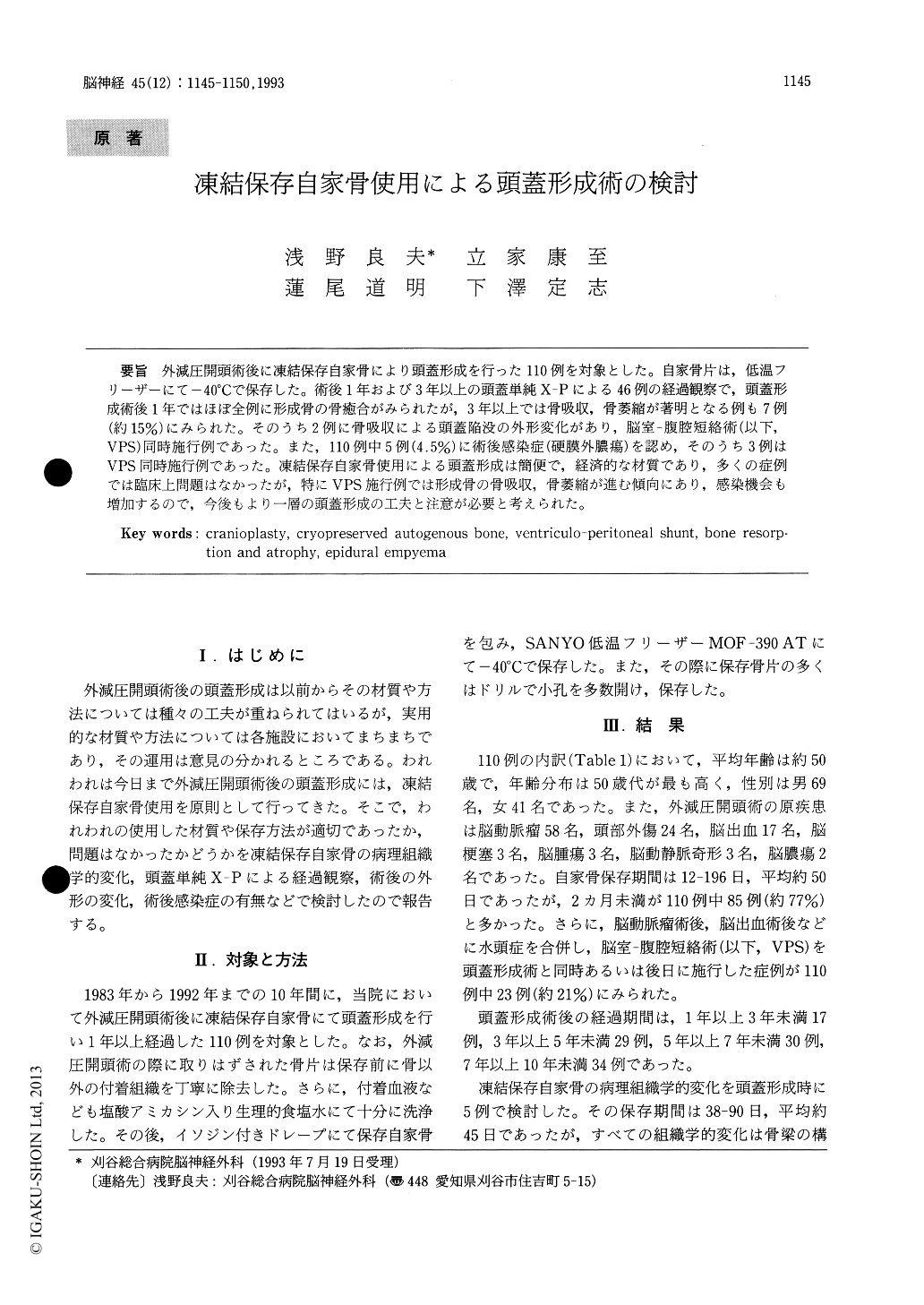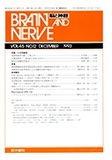Japanese
English
- 有料閲覧
- Abstract 文献概要
- 1ページ目 Look Inside
外減圧開頭術後に凍結保存自家骨により頭蓋形成を行った110例を対象とした。自家骨片は,低温フリーザーにて−40℃で保存した。術後1年および3年以上の頭蓋単純X-Pによる46例の経過観察で,頭蓋形成術後1年ではほぼ全例に形成骨の骨癒合がみられたが,3年以上では骨吸収,骨萎縮が著明となる例も7例(約15%)にみられた。そのうち2例に骨吸収による頭蓋陥没の外形変化があり,脳室—腹腔短絡術(以下,VPS)同時施行例であった。また,110例中5例(4.5%)に術後感染症(硬膜外膿瘍)を認め,そのうち3例はVPS同時施行例であった。凍結保存自家骨使用による頭蓋形成は簡便で,経済的な材質であり,多くの症例では臨床上問題はなかったが,特にVPS施行例では形成骨の骨吸収,骨萎縮が進む傾向にあり,感染機会も増加するので.今後もより一層の頭蓋形成の工夫と注意が必要と考えられた。
Various materials and methods can be used for cranioplasty following external decompression craniotomy. We generally use cryopreserved autogenous bone for cranioplasty following exter-nal decompression. We assessed several factors, including histological changes in the stored bone, postoperative skull X-ray changes, postoperative changes in skull morphology, and the incidence of postoperative infections. The purpose of this study was determined if our materials and preservation methods were appropriate.
The subjects were 110 patients who underwent cranioplasty using cryopreserved autogenous bone following external decompression at our hospital. They were followed up for at least one year. Bone fragments removed at the time of external decom-pression were stored at -40℃ an ultra-low tempe-rature freezer and returned to room temperature before using them for cranioplasty.
Follow-up skull x-ray films were obtained for 1-10 years postoperatively. Almost all of the 46 patients showed bone union at least one year after cranioplasty, but seven patients (15%) had marked bone resorption and bone atrophy after 3 years or longer. Five of these patients had a concomitant ventriculo-peritoneal shunt. Two of them devel-oped collapse of the skull due to bone resorption, and this was considered to have been influenced by the shunt. Epidural empyema occurred postoper-atively in five patients (4.5%), and staphylococci were the causative organisms in all five cases. The infections were completely cured by removal of the bone graft, debridement of the wound, and epidural drainage.
Cranioplasty following external decompression craniotomy using cryopreserved autogenous bone fragments is a simple procedure, and the materials are inexpensive. Many of our patients who under-went cranioplasty using cryopreserved autogenous bone experienced no serious complications. How-ever, progressive bone resorption and atrophy tend-ed to occur in patients with ventriculo-peritoneal shunts, and caution is also required with regard to postoperative infection. We conclude that further improvements are required to perform cranioplasty in patients with ventriculo-peritoneal shunts.

Copyright © 1993, Igaku-Shoin Ltd. All rights reserved.


